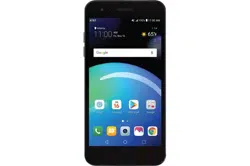Loading ...
Loading ...
Loading ...

For Your Safety 123
required to reach the network, in general, the closer you are to a wireless
base station antenna, the lower the power output. Before a device model
is available for sale to the public, it must be tested and certified to the FCC
that it does not exceed the limit established by the government-adopted
requirement for safe exposure. The tests are performed in positions and
locations (e.g., at the ear and worn on the body) as required by the FCC for
each model.
While there may be differences between SAR levels of various devices and
at various positions, they all meet the government requirement for safe
exposure.
The FCC has granted an Equipment Authorization for this model device with all
reported SAR levels evaluated as in compliance with the FCC RF emission guidelines.
SAR information on this model device is on file with the FCC and can be found
under the Display Grant section of
http://www.fcc.gov/oet/fccid
after searching on
FCC ID ZNFX210APM.
Additionally, the highest SAR values can also be found on the LG website:
https://www.lg.com/global/support/sar/sar.
Additional information on Specific Absorption Rates (SAR) can be found
on the Cellular Telecommunications Industry Association (CTIA) website at
http://www.ctia.org/
.
* In the United States and Canada, the SAR limit for mobile phones used by
the public is 1.6 watts/kg (W/kg) averaged over one gram of tissue. The
standard incorporates a substantial margin of safety to give additional
protection for the public and to account for any variations in measurements.
FCC Hearing-Aid Compatibility (HAC)
Regulations for Wireless Devices
On July 10, 2003, the U.S. Federal Communications Commission (FCC) Report
and Order in WT Docket 01-309 modified the exception of wireless devices
under the Hearing Aid Compatibility Act of 1988 (HAC Act) to require digital
wireless devices be compatible with hearing-aids. The intent of the HAC Act is
to ensure reasonable access to telecommunications services for persons with
hearing disabilities.
While some wireless devices are used near some hearing devices (hearing
aids and cochlear implants), users may detect a buzzing, humming, or whining
noise. Some hearing devices are more immune than others to this interference
noise, and devices also vary in the amount of interference they generate.
Loading ...
Loading ...
Loading ...
